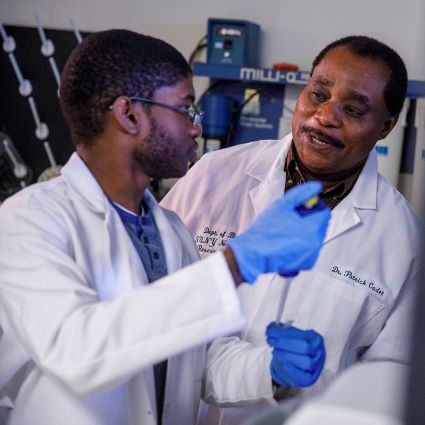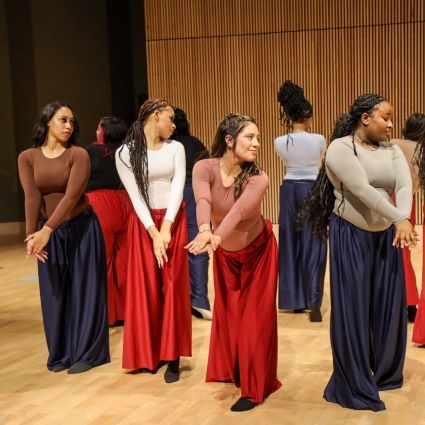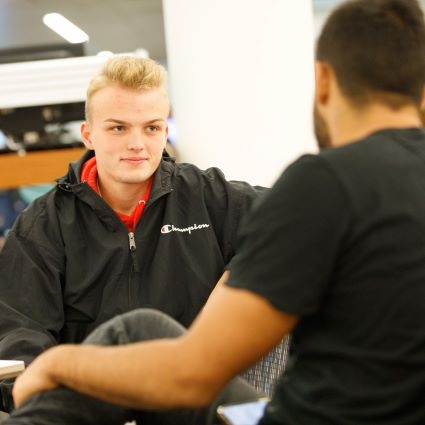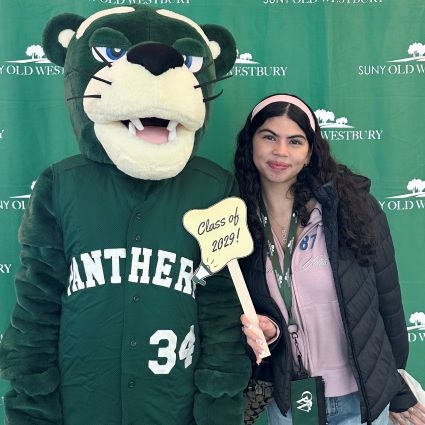The purpose of the 2026-2031 Strategic Plan is to establish SUNY Old Westbury as a center for academic excellence, innovation, inclusion, social justice, and sustainability. The campus will do so with a commitment to the values embedded in the United Nations Sustainable Development Goals (UNSDG), to continuously assess, benchmark and improve institutional activity, and to advance the four goals determined through campuswide discussion.
VISION, MISSION, AND CORE Values
Vision Statement
To be a premiere cosmopolitan public liberal arts university that cultivates growth, success and impact.
Mission Statement
The State University of New York at Old Westbury is a dynamic and diverse public liberal arts university that fosters academic excellence through close interaction among students, faculty and staff. Old Westbury weaves the values of integrity, community engagement, and global citizenship into the fabric of its academic programs and campus life. The University cultivates critical thinking, empathy, creativity and intercultural understanding, we endeavor to stimulate a passion for learning and a commitment to building a more just and sustainable world.
Core Values
- Excellence
- Sustainability
- Social Justice
- Integrity
- Public Liberal Arts Education
- Participatory Governance
- Intercultural Understanding
Our Goals
NOTE: An asterisk ("*") within the goals and metrics outlined on this page refers to the availability of further information in the Strategic Plan Addendum.

GOAL 1: ACADEMIC EXCELLENCE, AND RESEARCH
1.1: Develop a dynamic array of curriculum, programs and centers around an axis of liberal arts, social justice, and emergent workplace and global needs
1.2: Establish and strengthen mission-driven signature academic programs within the four schools
1.3: Graduate cosmopolitan students by providing broad exposure to people, ideas, experiences, research and deliberative civic discourse
1.4: Attract and retain excellent and mission driven faculty and staff who reflect our student composition
1.5: Leverage faculty and staff expertise and strengthen student research & creative activities to respond to global needs and social challenges
metrics for goal 1
Metrics - 2029 | Metrics - 2031 |
|---|---|
| 1.1: Launch 1 academic program per school | 1.1: Launch 3 academic programs/5 in SPS |
| 1.2: Identify 1-3 Signature programs per school | 1.2: Advance 3-5 Signature programs per school |
| 1.3: Increase (Inc.) participation in Global experiences by 10% | 1.3: Inc. by 25% |
| 1.4: Benchmark metrics on Employee Satisfaction Survey (ESS) | 1.4: Improve metrics on ESS from 2029 survey |
| 1.5: Inc. student research & creative activities by 25% | 1.5: Inc. by 50% |

GOAL 2: INNOVATION AND CREATIVITY
2.1: Foster a campus culture and technological infrastructure that enhances learning and administrative environments, enriches student experiences, and strengthens our community of scholars
2.2: Advance the institution’s regional, national, international activity and impact in research, innovation and engagement
2.3: Build an eco-system at the intersection of science, arts and entrepreneurship to engage students and address emerging societal concerns
2.4: Achieve Carnegie Classification as a Research College & University (RCU)
2.5: Increase the volume of grants, contracts and sponsored programs
metrics for goal 2
Metrics - 2029 | Metrics - 2031 |
|---|---|
| 2.1: Inc. the no. learning/technologically agile spaces/practices by 50% | 2.1: Inc. by 100% |
| 2.2: Inc. faculty scholarly outcomes* by 10% | 2.2: Inc. by 15% |
| 2.3: Launch 2 initiatives | 2.3: Launch 4 initiatives |
| 2.4: Achieve Carnegie Class. RCU | 2.4: Maintain |
| 2.5: Inc. research activities in alignment with RCU status | 2.5: Maintain |

GOAL 3: INSTITUTIONAL RESILIENCE & EXTERNAL PROFILE
3.1: Advance external brand as a “University of opportunity and quality” and a “Premiere MSI”
3.2: Strengthen the financial sustainability model, and increase fundraising, philanthropy & investments
3.3: Enact campus priorities aligned with the SUNY Climate and Sustainability Action Plan (CSAP) and relevant UNSDG
3.4: Expand relationships, partnerships, and alumni and stakeholder engagement
3.5: Enhance the University’s processes and use of data, policies and benchmarks
3.6: Expand support for the emergent needs, growth and development of students, faculty and staff
metrics for goal 3
Metrics - 2029 | Metrics - 2031 |
|---|---|
| 3.1: Inc. 15 places in US News; “Earn a B” on Niche | 3.1: 20 pos/B+ |
| 3.2: Inc. per year in funds raised by 10% | 3.2: Inc. by 10% |
| 3.3: Implement and track campus priorities (e.g. CSAP & UNSDG) | 3.3: Annual study/review/update baseline |
| 3.4: Inc. partnerships and alumni engagement by 10% | 3.4: Inc. by 20% |
| 3.5: Institute the Strategic Plan benchmark study (launch in 2026) | 3.5: Annual study/review/update baseline |
| 3.6: Inc. disaggregated employee and student satisfaction rates (campus climate) by 3% | 3.6: Inc. baseline by 5% |

GOAL 4: STUDENT AND ENROLLMENT SUCCESS
4.1: Strengthen students’ sense of belonging and affinity through the student experience and stellar service
4.2: Increase social mobility by offering market responsive career preparation and advancement
4.3: Apply data driven and best practice approaches that supports ambitious enrollment, student development, and student success outcomes
4.4: Globalize the campus experience by increasing the international student population and growing international partnerships
4.5: Expand underrepresented students’ access to experiences in academic programs, athletics, STEM, the Arts, and career opportunities
metrics for goal 4
Metrics - 2029 | Metrics - 2031 |
|---|---|
| 4.1: Inc. student satisfaction by 3% | 4.1: Inc. by 5% |
| 4.2: Improve to Carnegie class. “Opportunity Colleges and Universities” | 4.2: Maintain |
| 4.3.1: Inc. enrollment to 4800 | 4.3.1: Inc. to 5,200 |
| 4.3.2: Inc. persistence by 2% | 4.3.2: Inc. by 4% |
| 4.4: Inc. International students by 3% | 4.4: Inc. by 6% |
| 4.5: Optimize student mix levels at 25%+* | 4.5: Maintain |
